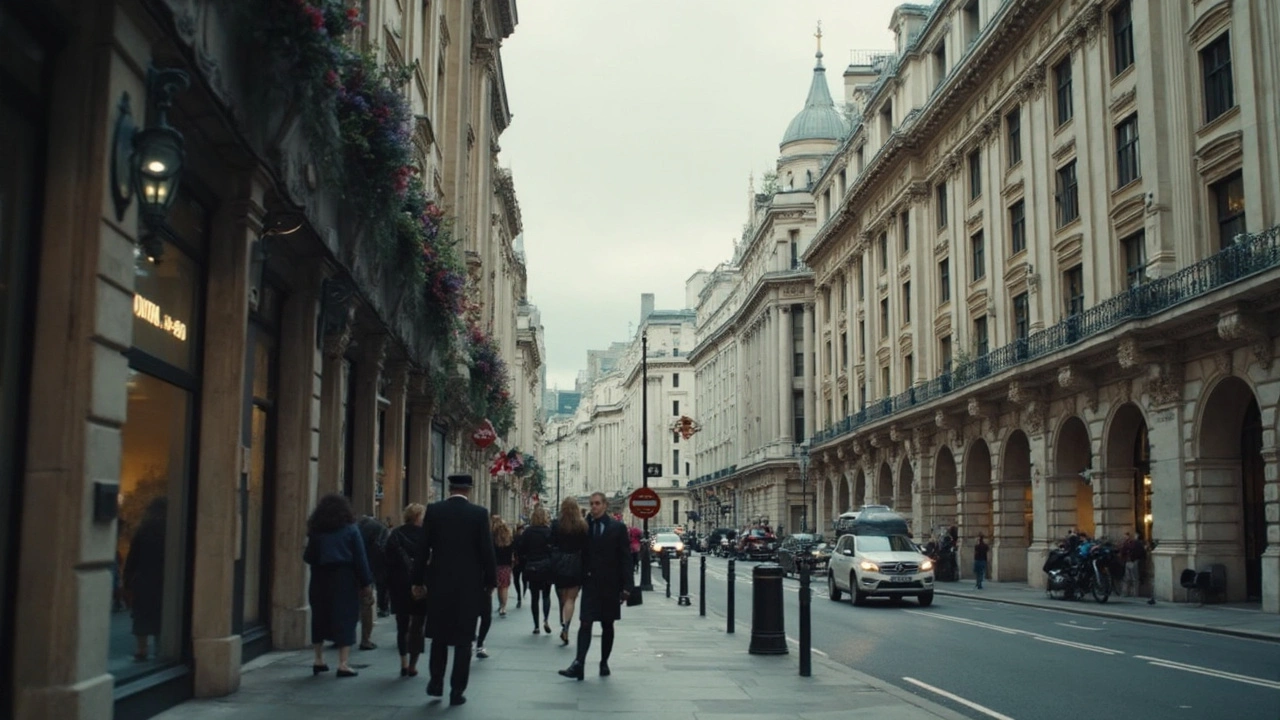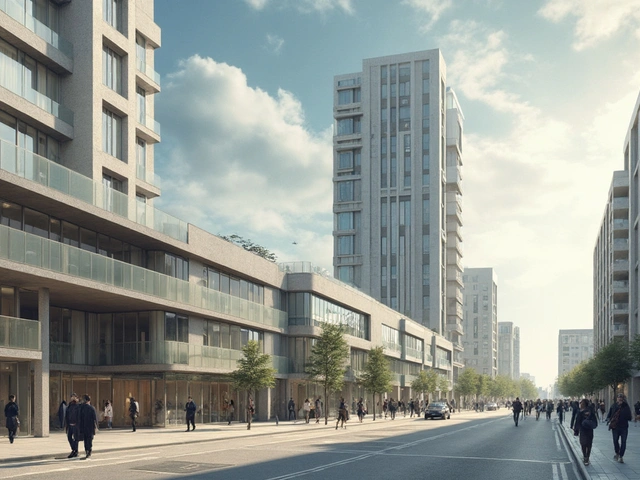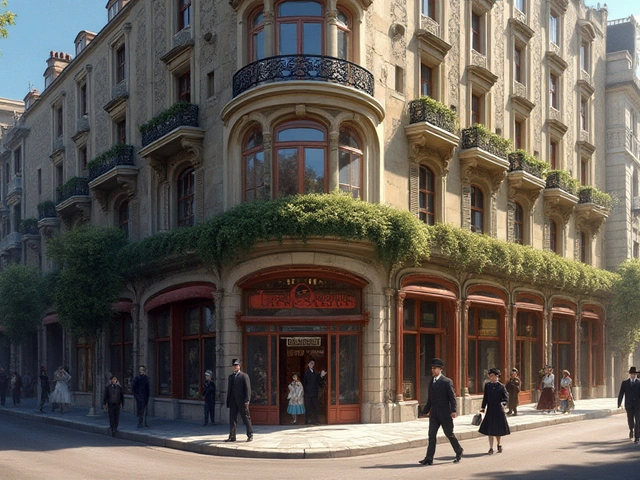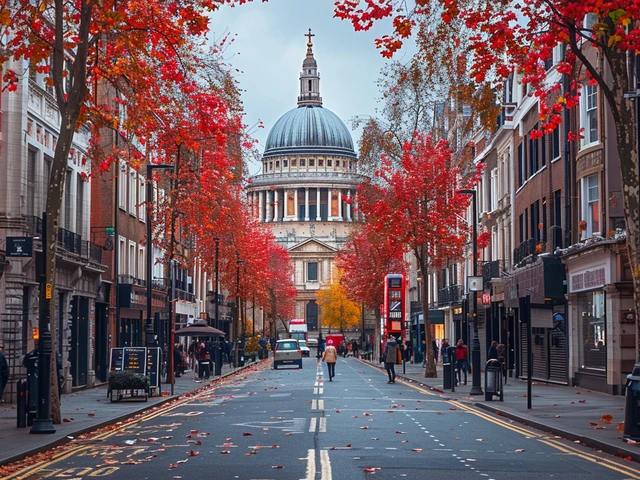Have you ever looked up at an old building downtown and wondered why it feels so grand—almost movie-set fancy? That’s Beaux-Arts architecture, and it’s not just for the history nerds or design pros. Even if you’ve never heard the name, you’ve definitely seen these impressive buildings with their bold columns, sweeping staircases, and dramatic statues. Big train stations, libraries, old banks? That’s usually Beaux-Arts showing off.
Most folks think this style is stuck in the past, but actually, Beaux-Arts still pops up in new places—from blockbuster movies to luxury condos. There are practical reasons these buildings keep getting reused too. Their wide open spaces and huge street-facing windows? Perfect for new shops, galleries, or hotels.
The best part: you don’t have to visit Paris or New York to see it. Chances are, your city has at least one old Beaux-Arts building. Start looking for decorative stonework, grand entrances, or rooflines with tiny statues—these are easy giveaways. And if you’re curious how to bring some of that old-school drama into your apartment or house, yes, you can totally do it without breaking the bank. I’ve got a few tricks up my sleeve to help.
- Beaux-Arts: The Basics
- What Makes Beaux-Arts Stand Out?
- Pop Culture and Modern Throwbacks
- Spotting Beaux-Arts in Your City
- Easy Ways to Add Beaux-Arts Style at Home
Beaux-Arts: The Basics
Beaux-Arts architecture started in France, specifically at the École des Beaux-Arts in Paris. This style made its way to the U.S. around the 1880s and just exploded—think of the old New York Public Library or Union Station in Washington, D.C. The name 'Beaux-Arts' literally means 'fine arts,' and that fits because the goal was to make everyday buildings, like train stations or museums, feel like art on a giant scale.
What sets this style apart is how it mixes classical Greek and Roman looks with modern building tech—like steel frames hiding behind all that decorative stone. That mix is why Beaux-Arts buildings could be both gorgeous and practical back then, plus why a lot of them are still standing strong today.
One cool thing: during the "City Beautiful Movement" in the U.S. (late 1800s–early 1900s), entire city plans used Beaux-Arts ideas. The layout of Washington, D.C.'s National Mall? Total Beaux-Arts move.
"The Beaux-Arts method wasn’t just about pretty facades—it was about order, proportion, and giving cities a sense of culture and confidence," said architectural historian Leland Roth.
Here's a quick rundown of what you’ll notice in most Beaux-Arts buildings:
- Massive, grand entrances
- Columns and pilasters
- Elaborate decorative sculptures and stonework
- Lots of symmetry—everything looks balanced
- Big, open interiors usually with skylights
Check out these quick stats on iconic beaux-arts buildings in the U.S.:
| Building | City | Year Opened | Current Use |
|---|---|---|---|
| Grand Central Terminal | New York | 1913 | Train Station |
| Union Station | Washington, D.C. | 1907 | Train Station & Shops |
| San Francisco City Hall | San Francisco | 1915 | City Government |
| Detroit Public Library | Detroit | 1921 | Library |
The main takeaway? Beaux-Arts isn’t just some old French style. It’s a big part of what made tons of American cities look the way they do now—and it’s still getting repurposed and respected by designers all over the world.
What Makes Beaux-Arts Stand Out?
So what’s the real deal with Beaux-Arts and why does it grab your attention? It’s all about mixing big impact with tons of detail. This style came out of the École des Beaux-Arts in Paris, with graduates bringing the look to cities all over the U.S. starting in the late 1800s. These buildings were never meant to blend in Quiet wasn’t really their thing. Instead, you get over-the-top fronts, dramatic doors, and massive staircases that feel almost theatrical.
Every Beaux-Arts building loves to show off. Look for these signature details:
- Lots of symmetry—if you drew a line down the middle, both sides would nearly match
- Heavy use of stone, especially fancy limestone or marble
- Columns and pilasters borrowed straight from ancient Greece and Rome
- Decorative sculptures—sometimes full-on statues, other times just faces or floral carving
- Metal details like huge bronze doors or railings
- Grand staircases, oversized windows, and entryways built to wow you
Many famous buildings in the U.S., like Grand Central Terminal in New York or the San Francisco Opera House, use this style. Even the old New York Public Library (the one with the stone lions out front) screams Beaux-Arts. Here’s a quick look at what usually sets these places apart:
| Feature | Common Material | Purpose |
|---|---|---|
| Columns | Limestone/Marble | Show off strength & tradition |
| Big Windows | Glass/Iron | Let in tons of light |
| Statuary & Sculptures | Stone/Bronze | Add drama, tell a story |
| Grand Entrances | Stone/Bronze | Impress right from the street |
Unlike some other architectural styles that tried to keep things simple and efficient, Beaux-Arts is all about the show. It was meant to look rich, important, and maybe just a little intimidating. No surprise, governments and big institutions loved it for their buildings. If you’re thinking about design that still gets called fancy and dramatic over a century later, beaux-arts has got you covered.
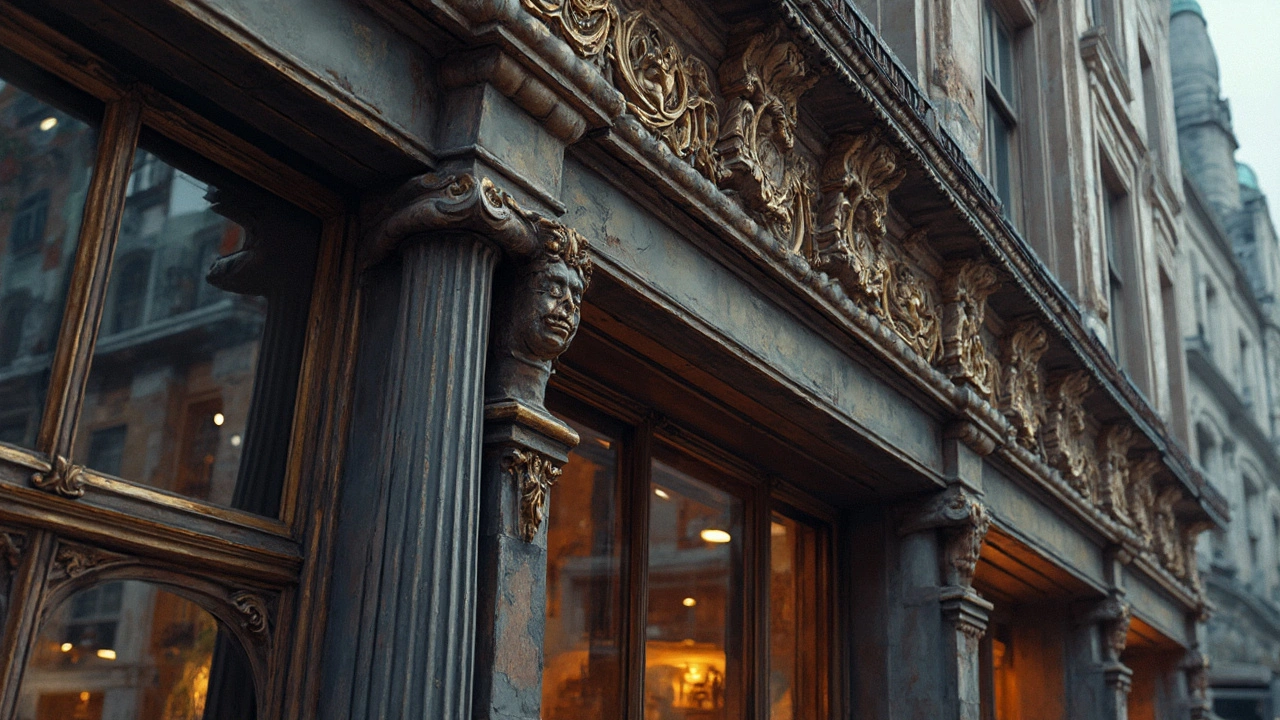
Pop Culture and Modern Throwbacks
Think Beaux-Arts is old news? Not even close. This style keeps popping up in movies, TV, and new buildings—sometimes right under our noses.
Let’s talk film first. Remember the elegant staircase scene in “The Untouchables” or the posh hotel lobby from “Home Alone 2: Lost in New York”? Both were filmed inside real Beaux-Arts landmarks—Chicago Union Station and New York’s Plaza Hotel. Hollywood loves the wow-factor you get from all those towering ceilings and gold details. It shouts luxury and drama, no CGI needed.
Modern architects still borrow from the Beaux-Arts playbook, especially when they want to make a bold first impression. If you’ve ever been inside the renovated Apple Store on Fifth Avenue or walked through the San Francisco City Hall, you’ve seen how new design can vibe with classic Beaux-Arts. Developers like these buildings because they're built to last, and with some creative updates, they become trendy hotspots for shops, hotels, or tech offices.
The numbers back this up—according to The National Trust for Historic Preservation, Beaux-Arts buildings are some of the most reused historic structures in the U.S. since 2000. Check out the comparison:
| Building Style | Renovations Since 2000 |
|---|---|
| Beaux-Arts | 2,750+ |
| Art Deco | 1,940 |
| Victorian | 1,320 |
| Modernist | 1,080 |
If you want to spot modern Beaux-Arts throwbacks, look for:
- Lobby floors with checkered marble tiles
- Grand arched doorways with glass or metal accents
- Modern lighting mixed with classical curves or sculpted details
- Restaurants or bars showing off restored columns and fancy ceilings
So next time you see a swanky event or new business inside an old post office or train station, you’re probably staring at a Beaux-Arts comeback story. This style makes regular buildings feel iconic, which is why it’s always in style—on screen and in real life.
Spotting Beaux-Arts in Your City
Think Beaux-Arts is only for big cities like Paris or New York? Cities all over North America have plenty of buildings in this bold, detailed style—sometimes hiding in plain sight. When you’re out running errands or meeting friends downtown, check out older train stations, post offices, courthouses, or main libraries. These buildings often stand out because they look like palaces or museums, even if they’re just government offices.
Here’s what to look for if you want to recognize beaux-arts around your neighborhood:
- Grand entrances: These buildings usually have big staircases and massive doors. The entryway almost shouts at you.
- Lots of symmetry: Everything lines up. If you split the building down the middle, both sides almost match perfectly.
- Columns everywhere: Usually chunky and tall—think about Roman or Greek columns, but with even more decoration at the top.
- Stone carvings and statues: Look for faces, plants, or even lions carved into the walls. Beaux-Arts loves fancy details—nothing is too extra.
- Ornate rooflines: Look up and you’ll see banisters, statues, or even domes along the roof. Sometimes they pop out with gold or bronze accents.
To make it even easier, here’s a quick list of well-known Beaux-Arts buildings in North America. If you’re near one, it’s worth a visit—even if you’re just snapping a photo or grabbing lunch nearby:
| Name | City | Year Opened |
|---|---|---|
| Grand Central Terminal | New York | 1913 |
| Union Station | Washington, DC | 1907 |
| San Francisco City Hall | San Francisco | 1915 |
| Cleveland Museum of Art | Cleveland | 1916 |
| Field Museum | Chicago | 1921 |
Bonus tip: Google Maps aerial view can help you see those wild rooflines. If you’re into photography, try catching these buildings on a sunny day—the shadows really highlight all those carved details.
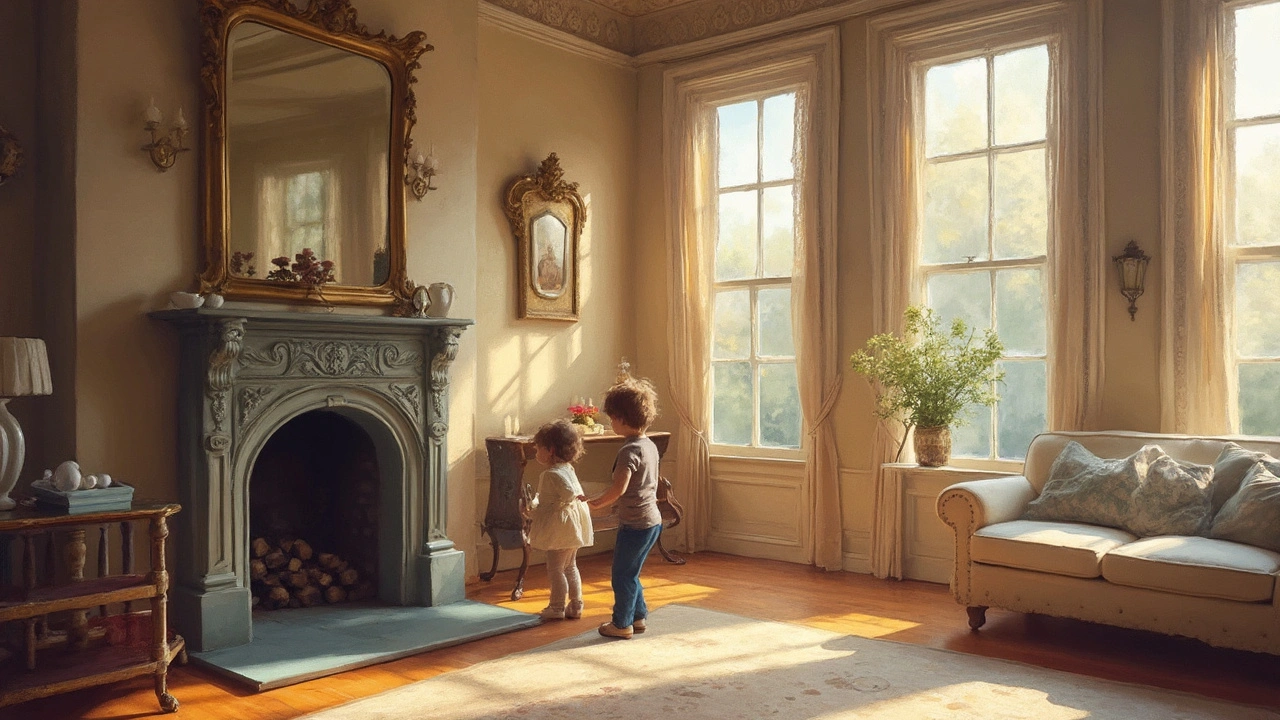
Easy Ways to Add Beaux-Arts Style at Home
You don’t need a mansion or deep pockets to pull in some Beaux-Arts flavor at home. The style’s all about details and a sense of drama, but you can do it on any budget. Here are simple, doable ways to get the look and feel, whether you rent or own your place.
- Beaux-arts style loves big mirrors with bold frames. Pop one over your sofa or in your entryway to fake that museum vibe—bonus points for gold or black frames.
- Look for thrift store lamps or chandeliers with a classic vibe. Even a cheap brass lamp goes from blah to wow with the right light bulb and shade.
- Add some molding. You can grab peel-and-stick options at most hardware stores now, and it takes a room from plain to runway-ready in an hour.
- Don’t forget artwork. Go for traditional-looking prints, black-and-white photography in chunky frames, or even simple sketches—arrange them like a mini gallery wall.
- Mix in a little symmetry. Place matching chairs or lamps on either side of your couch or bed. It’s a quick trick for instant Beaux-Arts balance.
Want to know where most folks start? Here’s a quick peek at which elements are the easiest to add and how much time you’ll need for each one:
| Feature | Time Needed | Where to Find |
|---|---|---|
| Large Framed Mirror | 15 minutes | Home stores, thrift shops |
| Stick-On Molding | 1 hour | Hardware store, online |
| Chandelier or Fancy Lamp | 30 minutes | Thrift shop, flea market |
| Art Prints with Bold Frames | 20 minutes | Print shops, online, your own photos |
Last tip: If you want to go all out, try painting one wall a deep navy or dark green and put your best framed art or mirror there. It’s simple but has a big impact—especially in small apartments. That’s Beaux-Arts for real people, not just textbook examples.

